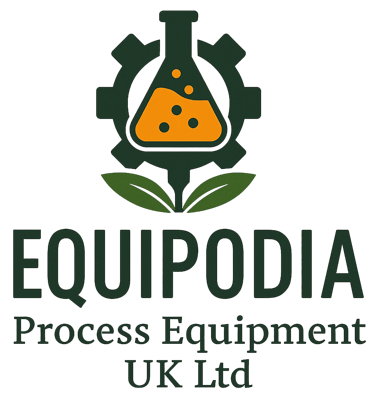
Industrial Porcelain Enamel
Information Guide
🧪 Glass Lining Technology in the Chemical Industry: Properties, Applications, and Practical Considerations
🔍 Introduction
Glass lining technology—also called industrial porcelain enamel or glass-lined steel—is a method of fusing a corrosion-resistant vitreous enamel to a metal substrate. This process creates a hybrid surface combining the strength of steel with the chemical inertness of glass. In the chemical industry, this technology is indispensable for ensuring safety, durability, and material purity in corrosive and high-stakes processing environments.
💎 Material Properties of Glass Linings
The unique benefits of glass lining stem from its molecular structure and firing process. Key properties include:
• Corrosion Resistance: Impervious to acids, alkalis, salts, and solvents.
• Smooth Surface: Minimizes residue adherence; simplifies cleaning and sterilization; avoids cross-contamination.
• High Thermal Stability: Withstands operating temperatures exceeding 200–300°C, and resists thermal shock.
• Chemical Inertness: Non-reactive with most chemicals, preserving product purity across a wide pH range.
• UV and Wear Resistance: Surface gloss and color stability in challenging environments.
• Abrasion Resistance: Outperforms many metals in mechanical wear situations.
These properties result from the careful composition of frit—an engineered mix of silica, borax, soda ash, and oxides—that is applied and fired at high temperatures to bond with the metal substrate and form a hardended glass coating.
🏭 Applications in the Chemical Industry
Glass-lined vessels are integral in the production and handling of:
• Acids and Caustics: Particularly sulfuric acid, hydrochloric and nitric acids, caustics under adequate pH values.
• Pharmaceuticals and Biotech: Supporting stringent GMP standards with non-stick, non-reactive, sterile surfaces.
• Food-grade Chemicals: Ensuring hygiene and preventing contamination.
• Fine Chemicals and Pigments: Reactors and storage tanks reduce risk of corrosion and product alteration and preserve batch integrity.
• Agitators, Columns, and Pipework: Where integrity across mechanical and chemical operations is vital.
Due to its broad inertness and sterilizable nature, glass-lining finds utility wherever purity and safety are non-negotiable.
👍 Advantages
Glass-lined systems offer multiple benefits:
• Long Service Life: Minimal degradation in harsh environments.
• Reduced Maintenance: Less frequent inspection and repair than unlined steel.
• Preservation of Product Quality: Prevents leaching or reaction with vessel walls.
• Operational Safety: Mitigates risk of corrosion-related failures.
• Smooth Cleaning Cycles: Ideal for batch changes in multi-product plants.
👎 Limitations & Constraints
Despite its strengths, glass lining has notable constraints:
• Mechanical Fragility: Prone to chipping or cracking from mechanical impacts or sudden temperature shifts.
• Weight and Cost: Heavier and more expensive than alternatives like polymer linings or stainless steel.
• Repair Complexity: Requires specialized methods and skilled technicians for patching or recoating.
• Limited pH Tolerance: Highly alkaline or hydrofluoric environments may degrade enamel over time.
• Electrostatic Risk: Localised electrostatic discharge may result in defects in the enamel coating of glass-lined surfaces. See below for a detailed discussion.
⚠️ General Precautions and Usage Guidelines
To maximize durability and safety, operators should adhere to:
• Temperature Management: Avoid rapid heating or cooling; follow recommended ramp-up rates.
• Impact Avoidance: Use soft paddles in agitators and protect vessels from shocks.
• Inspection Protocols: Periodic testing (e.g., spark testing) to detect flaws in the enamel.
• Chemical Compatibility Checks: Verify frit suitability for specific process chemicals.
• Proper Startup/Shut-Down Procedures: Prevent thermal or chemical stresses that could damage lining.
Routine inspections and maintenance plans ensure longevity and operational safety in sensitive processes.
🧠 Conclusion
Glass lining technology has significantly advanced the containment and processing of highly corrosive chemicals and high-purity materials in industrial operations. By integrating the mechanical strength of carbon steel with the chemical inertness and smoothness of vitreous enamel, glass-lined vessels provide a robust and non-reactive interface between process media and structural materials. This dual-material system delivers exceptional corrosion resistance, product purity, and operational safety, rendering it essential for applications in the chemical, pharmaceutical, and specialty materials sectors.
Despite its advantages, glass lining remains susceptible to mechanical impact, thermal stress, and chemical attack under extreme conditions. High pH or strongly alkaline environments, rapid temperature gradients, and localized electrostatic discharge can induce microcracking, delamination, or pinhole defects in the enamel layer. These failure modes are particularly critical under dry process conditions or during the handling of volatile materials, where charge accumulation and discharge potential are elevated. Effective electrostatic management—through appropriate grounding, humidity control, and process design—is therefore integral to maintaining the integrity and service life of glass-lined equipment. Through a combination of precise engineering, controlled operation, and preventive maintenance, the chemical industry continues to rely on glass lining as a cornerstone technology for corrosion-resistant and contamination-free processing.
⚡ Electrostatic Risk Considerations
Electrostatic discharge (ESD) occurs when static electricity builds up and abruptly releases—often triggered by mixing, pumping, or transferring dry powders or volatile solvents. In glass-lined vessels, this discharge can produce intense, localized heating or shock. While the metal substrate beneath can tolerate it, the fused glass lining is vulnerable:
• Localised Microfractures: The lining may crack or spall due to thermal expansion mismatch or direct electrical stress. If these discharges hit the lining, especially near welds or edges, the damage might be invisible initially but escalate quickly under chemical exposure.
• Loss of Integrity: Even tiny cracks compromise corrosion resistance, leading to underfilm corrosion.
• Safety Hazards: Contamination, chemical leakage, and equipment failure in sensitive operations.
• In high-purity and corrosion-sensitive operations, such risks escalate: 1) Dry Powder Processing: Plastics, resins, and other non-conductive materials can generate static as they flow or agitate. 2) Solvent Handling: Low-conductivity hydrocarbons (e.g. toluene, alkanes) can accumulate charge during transfer or blending. 3) Agitation or Pumping: High-speed operations increase electrostatic buildup, especially in low-humidity environments.
✅ Application Precautions to Minimize Electrostatic Damage
Professionals managing glass-lined systems typically take these steps:
• Grounding and Bonding: Ensure all vessel components, agitators, and transfer systems are properly grounded to dissipate charge.
• Humidity Control: Maintain optimal ambient humidity to suppress static buildup in dry processes.
• Material Selection: Avoid highly insulative powders or modify formulations to reduce charging potential.
• Slow Addition Techniques: Introduce high-risk materials gradually to minimize turbulence and charge separation.
• Anti-static Additives: In some cases, conductive agents such as Statsafe(TM) are blended into solvents or powders.
• Monitoring Systems: Install ESD detection systems in highly sensitive zones.
• Routine Inspection for: 1) Pinholing or crazing: Early signs of electrostatic stress. 2) Spark testing: Used to detect breaches in lining integrity after suspected ESD incidents. 3) Thermal imaging: Helps detect micro-heating effects from past discharges.
Equipodia is a specialist of glass lined process equipment. Explore our product range or contact us today to discuss your specific needs.
Equipodia Process Equipment UK Ltd
Customer Services
contact@equipodia.co.uk
+44-191 390 2300
© 2025 Equipodia. All rights reserved.
Quality chemical process equipment.
Registered in England No 16609310
Registered Address: 128 City Road, London EC1V 2NX, UK
